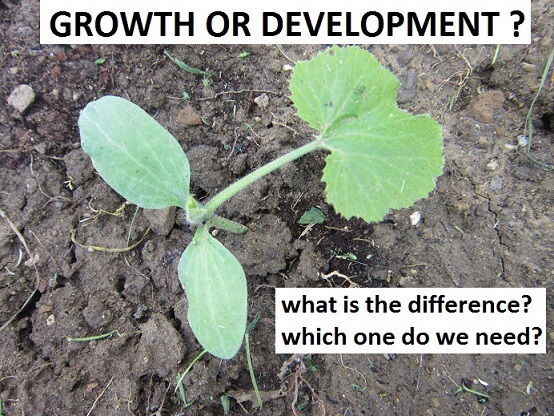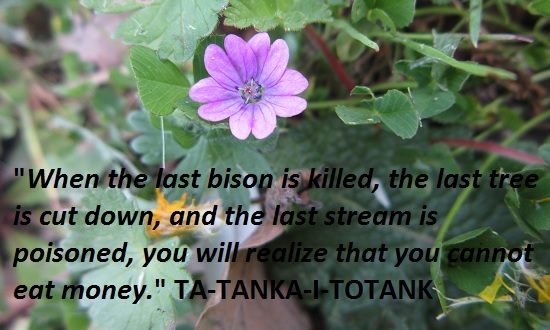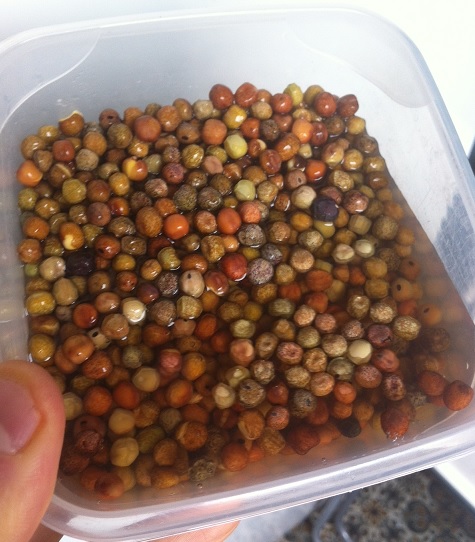When you are a person with some critical thinking it is very likely that you will have two different reactions at the food advertising tricks you see/hear in the media, or directly in the supermarkets.
The first is disappointment: you recognize that some people (the food industry marketing experts) are smarter than the average consumer, so they’re using their position to deceive that consumer by telling her misleading notions about nutrition and health. And you find it very unfair.
But the second feeling is amusement: since you are as smart as those experts and even more, you are invulnerable to their strategies. You see the lies skimmed of all the noise and the distractions. The idea that those techniques based on lies are used against you is just ridiculous. You know you can’t be fooled so easily. My usual reaction when I see food advertising tricks on television is: \:-] And after that I have a good laughter: “do they really expect that I buy this!” XD
So I decided to give birth to the top 10 food advertising tricks below. I hope that it will be useful to you for both reasons: you may discover that you are being told lies from the commercials and the packages, or you may have already discovered that, and you are ready to mock them with me. Let’s start.
1. The happy family
 Mum, dad, kids: smiling all together, looking very happy and eating the advertised foods. It is very easy to see these scenarios in the commercials. The food marketers want you to associate the ideas of family, house, safety, happiness to their processed aliments, typically sugary biscuits, breakfast cereals and snacks.
Mum, dad, kids: smiling all together, looking very happy and eating the advertised foods. It is very easy to see these scenarios in the commercials. The food marketers want you to associate the ideas of family, house, safety, happiness to their processed aliments, typically sugary biscuits, breakfast cereals and snacks.
Well, a first note is that behind those graciously smiling mums and dads there are usually hot actors aged 25-30, that probably in their real life pay a lot of attention to what they eat. I guess that outside the commercials they wouldn’t touch those junk foods even with a stick.
And another note is that this model, with which the media have been bombing us for decades, becomes dangerous because it makes you feel inadequate if your family isn’t exactly like that. What if your parents are divorced, if you’re a couple without kids, or if your daughter is disabled, for example? Personally and unfortunately, I watched hundreds on these tv commercials in my youth. In Italy there is a food company (called Mulino Bianco) that has shown to generations of Italians this kind family eating their sweets. “Your family is like that of Mulino Bianco” has become almost a proverb in Italy, meaning that your family is lovely and united. I’ve always secretly dreamed of seeing the off-air shootings of the Mulino Bianco family where mum, dad, kids all start to become rude, burp, fart, insult and fight with each other.
2. Sexy food
Sex is used to sell everything, and food is no exception. The reason is simple: it works, always (memo for me: add more boobs in the next articles). There are countless tv commercials that use hot models to market food, and here are two obvious examples, both with soda drinks.
 In the first a guy is sailing on a boat with a hot girl. The boat bounces up and down because of the sea waves, and so do the boobs of the girl. The poor guy tries to pour the soda in a glass, but it’s an hard task since he is kinda hypnotized by the boobs going up and down rhythmically, just like the liquid in the bottle. Putting together, in the same shot, the soda and the boobs in the background is diabolically effective.
In the first a guy is sailing on a boat with a hot girl. The boat bounces up and down because of the sea waves, and so do the boobs of the girl. The poor guy tries to pour the soda in a glass, but it’s an hard task since he is kinda hypnotized by the boobs going up and down rhythmically, just like the liquid in the bottle. Putting together, in the same shot, the soda and the boobs in the background is diabolically effective.
In the second, an old times classic, all the female employees in an office interrupt their job at a precise time each morning to watch a worker in the front yard who takes his break.
The employees have a strong motivation for interrupting, since the guy takes off his shirt (revealing a sexy body) and drinks his soda with great satisfaction, for the joy of the ladies. While the target is different, the strategy is perfectly the same: siding the product with a hot body.
3. A trick for the children and one for the parents
 The food advertising tricks used with children are impressive. The food industry counts on two factors to make money in this field. The first is that kids are easy to attract with colors, cartoons, games: the marketing strategists use these things to make children want to buy their products. Usually they bind the snacks with little games, particularly with collectible items that create the need to “have them all” and consequently to do repeated shopping. The most typical example is the chocolate eggs with surprises inside.
The food advertising tricks used with children are impressive. The food industry counts on two factors to make money in this field. The first is that kids are easy to attract with colors, cartoons, games: the marketing strategists use these things to make children want to buy their products. Usually they bind the snacks with little games, particularly with collectible items that create the need to “have them all” and consequently to do repeated shopping. The most typical example is the chocolate eggs with surprises inside.
Industry knows also a second thing: while the kids are easy to attract, it’s their parents who make the decision if to buy or not and take out the wallet. And parents are not as easy to trick with games: they are more concerned about the health of their kids. This is why we see campaigns like “chocolate egg x, the magic of the surprise (trick for children) and the genuineness of the milk (referring to the milk chocolate, this is the trick for parents… like if the milk in a chocolate milk egg would make it an healthy food!).
4. The diet version
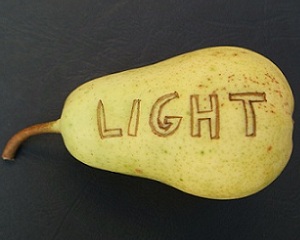 My personal recommendation is to stay away from the products that are “diet”, “light” and that in general make healthy claims. Real healthy foods don’t claim anything (have you ever seen a carrot with the label “diet carrot” or the commercial of a pear saying “pear light”?), while processed foods coming from the industry are usually sold with this kind of tricks.
My personal recommendation is to stay away from the products that are “diet”, “light” and that in general make healthy claims. Real healthy foods don’t claim anything (have you ever seen a carrot with the label “diet carrot” or the commercial of a pear saying “pear light”?), while processed foods coming from the industry are usually sold with this kind of tricks.
Like in the case of organic white flour, the key point is: where are you are focusing? On something that is nutritionally relevant? Well, searching for the diet version of a crappy processed food is not relevant at all, it’s simply wasting your focus on choosing the less worse between two versions, regular and diet, of a food that probably shouldn’t be part of your diet at all.
5. Collect the points
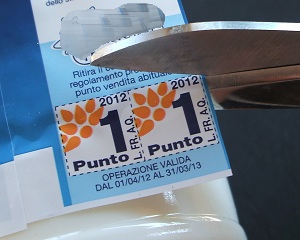 When I was a kid I did many collections of points. With all my snacks, sweets and cereals I “won” a lot of prizes: bags, books, games, clothes. As a conscious adult now I see the deception behind this evil mechanism. The industry marketing strategists have strong reasons to release points and prizes with their food, to name a few:
When I was a kid I did many collections of points. With all my snacks, sweets and cereals I “won” a lot of prizes: bags, books, games, clothes. As a conscious adult now I see the deception behind this evil mechanism. The industry marketing strategists have strong reasons to release points and prizes with their food, to name a few:
- They push you to buy more and more, because you want to reach the desired prize as soon as possible
- They set a deadline for collecting the points and you’re pushed to buy more fast, because you want to reach the points you need before the offering expires.
- They make you loyal to their brand: if you change supermarket or city you will search for the same brand, because you want their points
- They make you round up your expense: sometimes the points are related to the money you spend: if you spent 38 dollars gaining 3 points, why not spending other 2 dollars to gain 4 points.
No thanks, no collections of points for me.
6. Crackers without lard
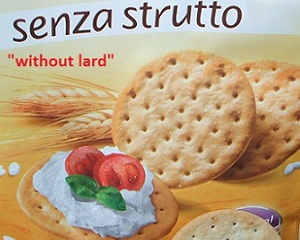 This is the specific case of a food that made me think about this top ten, and it goes in 6th because it’s very interesting. The package of these crackers claims “without lard”. When I saw it in the shelves I thought “what the hell? Is it a privilege now that crackers have no lard in them? To a point that it must be proudly stated in front of the package?” That’s very funny, since actually there should be no reason to put lard in crackers (!) there has never been, there will never be: they are just crackers!
This is the specific case of a food that made me think about this top ten, and it goes in 6th because it’s very interesting. The package of these crackers claims “without lard”. When I saw it in the shelves I thought “what the hell? Is it a privilege now that crackers have no lard in them? To a point that it must be proudly stated in front of the package?” That’s very funny, since actually there should be no reason to put lard in crackers (!) there has never been, there will never be: they are just crackers!
Evidently this company is simply selling white flour based crackers that have no particular healthy merit (again: white flour is a useless food in terms of nutrition) but they really, really wanted to find some positive nutritional side about these crackers so they came out with this. “Hey guys, look at our crackers! We haven’t put pork fat in them, give us a pat on our back!”.
What they are using here, and what many-many-many marketing strategists use, is one of the most typical food advertising tricks you will ever see. It simply consists in not saying anything about the important negative sides of the product (white flour based, salt, additives) and creating and highlighting from nothing unimportant “positive” nutrition facts.
7. The game of %
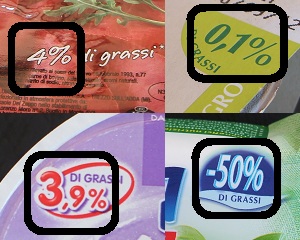 “Contains only” is particularly frequent in the marketing of processed meat, cheese and yogurt. On the package of these products it’s easy to read things like “contains only the 1% fat” or “low in fat”.
“Contains only” is particularly frequent in the marketing of processed meat, cheese and yogurt. On the package of these products it’s easy to read things like “contains only the 1% fat” or “low in fat”.
First of all: who says that 1% is “only”? Actually 1% (or whatever percentage you see) is a lot if the fats are unhealthy fats, like those contained in most processed meats and cheese. “Only” must be contextualized, because used like this on the packages it doesn’t mean anything, it’s just a trick used to convince you that the food is not going to make you fat.
In the right context of nutrition instead, first we consider the kind of fat (is is a good or a bad kind of fat?) and then we consider from what food it comes (who cares if a yogurt has 0.1% fat if the yogurt itself is full of horrible artificial sweeteners?). Following this line it would make perfectly sense to advertise an avocado by proudly saying “it has 58% of great fats”, while it would make perfectly sense either to advertise margarine by cautiously saying “beware it has 1% of bad fats”.
8. Organic crap
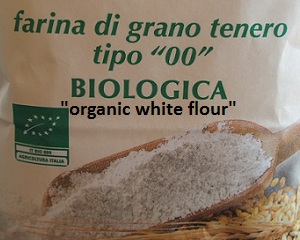 Food advertising tricks in the organic market? Yes, the marketing strategists are able to use to their advantage the good reputation of organic foods to make you buy unhealthy products instead. I am a big supporter of organic aliments, in particular I buy a lot of organic fruits and vegetables. I think that the reduced amounts of pesticides and the more natural production techniques are definitely worth the higher price.
Food advertising tricks in the organic market? Yes, the marketing strategists are able to use to their advantage the good reputation of organic foods to make you buy unhealthy products instead. I am a big supporter of organic aliments, in particular I buy a lot of organic fruits and vegetables. I think that the reduced amounts of pesticides and the more natural production techniques are definitely worth the higher price.
But even the being organic of a food, which is in general a very positive factor, can become a completely unimportant variable when it applies to an intrinsically unhealthy food, like white flour. And the same consideration is valid for all the foods that contain organic refined sugar. “Organic refined” is an oxymoron! Like saying “healthy unhealthy”!
Notice that now almost all the supermarkets have a section for nutrition freaks with healthy stuff, but even in these sections you can find advertising tricks that can push you to buy supposedly healthy foods that are instead sugary crap. For example, who cares if a donught made of refined flour and refined sugar is organic? It’s a donught! It has an high glycemic index, it causes tooth decay, it is fattening and it is unhealthy whether it’s organic or not!
9. Fast food
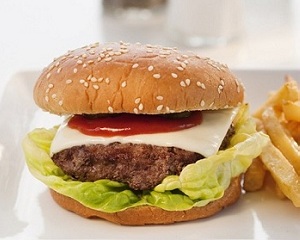 A lot can be said about the advertisement techniques used to sell fast food, but I must admit one thing: the companies rarely make healthy claims about their products (those would be impossible lies to tell in any case, considered how atrocious are the ingredients). No, for a market that is worth many millions around the planet, the strategy is pretty straightforward: take the food, highlight the great taste, be silent about the health issues.
A lot can be said about the advertisement techniques used to sell fast food, but I must admit one thing: the companies rarely make healthy claims about their products (those would be impossible lies to tell in any case, considered how atrocious are the ingredients). No, for a market that is worth many millions around the planet, the strategy is pretty straightforward: take the food, highlight the great taste, be silent about the health issues.
You can be assured that the taste is great: it’s impossible to put that much sugar, salt, fat, flavors in an aliment and not make it taste great. Hamburgers, french fries, sodas, cakes, ice creams practically advertise themselves in the commercials when they appear so tender and juicy, or golden crispy, or fizzy, or colored and creamy.
What is missing -on purpose- in the picture is the heavy price you pay for the short-term pleasure of this taste. While hamburgers and co. are very cheap (health deterioration with fast food is within everyone’s reach) the tax on your body is huge. But of course, you will not hear anything about the long list of medical conditions caused by this crap in your diet.
10. With antioxydants
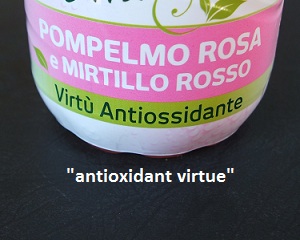 The final spot in this list of the food advertising tricks goes to something liquid: fruit juices and smoothies. The marketing experts use the good nutritional reputation of fruit to create “fruit based” beverages that actually contain minimal quantities of fruit (but this little content is the only one who is highlighted in the package and in the commercials) and, on the other hand, a lot of sugar and chemicals.
The final spot in this list of the food advertising tricks goes to something liquid: fruit juices and smoothies. The marketing experts use the good nutritional reputation of fruit to create “fruit based” beverages that actually contain minimal quantities of fruit (but this little content is the only one who is highlighted in the package and in the commercials) and, on the other hand, a lot of sugar and chemicals.
In the picture beside it’s shown one of these cases. The package states proudly that the juice has some “antioxidant virtue”, while if you turn on the back and see the nutrition facts label you find that there is only a content of …% of fruit, and plenty of added sugar. These few antioxidants have a too high sugar-price in my opinion.
It’s even possible to find fruit juices where the only fruit is the one shown on the label: inside it there are only artificial flavors and chemicals! Unfortunately the law allows that.
The only way not to get deceived by this kind of tricks is to go for 100% smoothies and juices. This is the secure way to know that you are buying really squeezed fruit and not sweetened, colored water.
Conclusion
How did I choose the elements in my top 10 of the food advertising tricks?
I considered these 10 because, even if the set is heterogeneous -some are generic techniques used in the food advertisement, some are the specific cases of certain foods-, I find them particularly insidious. I am sure that they impact a lot of people. It’s easy to fall into these traps if you’re not fully conscious, even when you are just shopping in the supermarket. But if you’ve come so far with the reading, now you are harder to deceive. And next time, when you see these tricks, you can \:-] and XD too.
Notes: this article is a “survivor” of my Nutrition freak project, a website that I created in the past entirely about nutrition and health. After awhile I decided to close that website, and publish my articles on nutrition and health here in my personal blog, together with the other articles on different topics.
Related:

